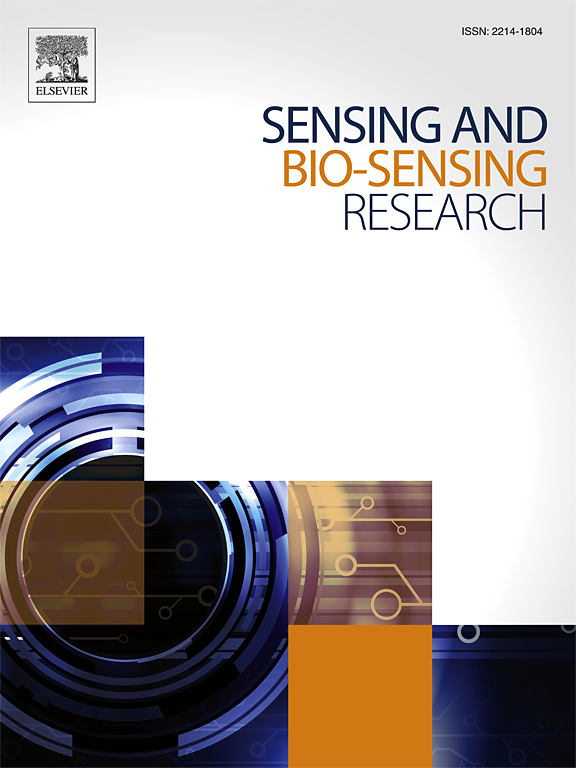A portable electrochemical immunosensor for detection of S. aureus based on polyelectrolyte-modified screen-printed carbon electrode
IF 5.4
Q1 CHEMISTRY, ANALYTICAL
引用次数: 0
Abstract
In this report, we present electrochemical immunosensors for the detection of S. aureus bacteria on the basis of SPCE/PEI/АBSA/PSS layer-by-layer assembly as a recognition element. QCM measurements and AFM imaging ensure effective adhesion of S. aureus antibody to PEI surface and its strong interactions with analyte through the PSS polyelectrolyte layer. Impedimetric detection of S. aureus gives the LOD of 1000 CFU/mL and the linear range from 104 to 107 CFU/mL and features facile assembly of recognition element and easy sampling. Voltammetric detection of the formation of the sandwich immunocomplex with secondary antibody in the outermost layer (AB–AG–AB-HRP) not only decreases the detection limit to 230 CFU/mL and expands the linear range of detection to 103–108 CFU/mL, but also could detect S. aureus bacteria with a portable open-source custom potentiostat in voltammetric mode, which is promising for non-invasive point-of-care monitoring of pathogens and addresses issues of antibody-based sensors, such as high cost and difficult chemical modification.

基于聚电解质修饰的丝网印刷碳电极的便携式金黄色葡萄球菌检测电化学免疫传感器
在本报告中,我们基于SPCE/PEI/АBSA/PSS逐层组装作为识别元件,提出了用于检测金黄色金黄色球菌的电化学免疫传感器。QCM测量和AFM成像确保金黄色葡萄球菌抗体有效粘附PEI表面,并通过PSS聚电解质层与分析物强相互作用。金黄色葡萄球菌阻抗检测的检出限为1000 CFU/mL,线性范围为104 ~ 107 CFU/mL,识别元件组装方便,采样方便。伏安法检测最外层含二抗的三明治免疫复合物(AB-AG-AB-HRP)的形成,不仅将检测限降至230 CFU/mL,将线性检测范围扩大到103-108 CFU/mL,而且还可以在伏安模式下使用便携式开源定制恒电位器检测金黄色葡萄球菌,有望实现病原体的无创即时监测,解决了基于抗体传感器的问题。如成本高、化学改性困难等。
本文章由计算机程序翻译,如有差异,请以英文原文为准。
求助全文
约1分钟内获得全文
求助全文
来源期刊

Sensing and Bio-Sensing Research
Engineering-Electrical and Electronic Engineering
CiteScore
10.70
自引率
3.80%
发文量
68
审稿时长
87 days
期刊介绍:
Sensing and Bio-Sensing Research is an open access journal dedicated to the research, design, development, and application of bio-sensing and sensing technologies. The editors will accept research papers, reviews, field trials, and validation studies that are of significant relevance. These submissions should describe new concepts, enhance understanding of the field, or offer insights into the practical application, manufacturing, and commercialization of bio-sensing and sensing technologies.
The journal covers a wide range of topics, including sensing principles and mechanisms, new materials development for transducers and recognition components, fabrication technology, and various types of sensors such as optical, electrochemical, mass-sensitive, gas, biosensors, and more. It also includes environmental, process control, and biomedical applications, signal processing, chemometrics, optoelectronic, mechanical, thermal, and magnetic sensors, as well as interface electronics. Additionally, it covers sensor systems and applications, µTAS (Micro Total Analysis Systems), development of solid-state devices for transducing physical signals, and analytical devices incorporating biological materials.
 求助内容:
求助内容: 应助结果提醒方式:
应助结果提醒方式:


